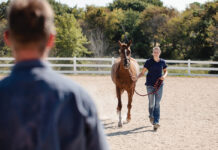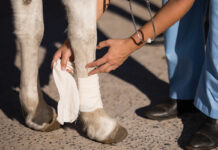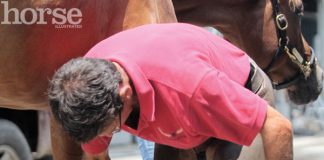As many owners will testify, horses can find the strangest ways to get hurt. Sometimes those injuries involve a foreign object that creates a puncture wound. Whether it’s running into a fence or structure, being struck by flying debris or stepping on something, horses can be injured by tree limbs, fence boards or pipes, nails, fencing staples, sheets of metal and much more.
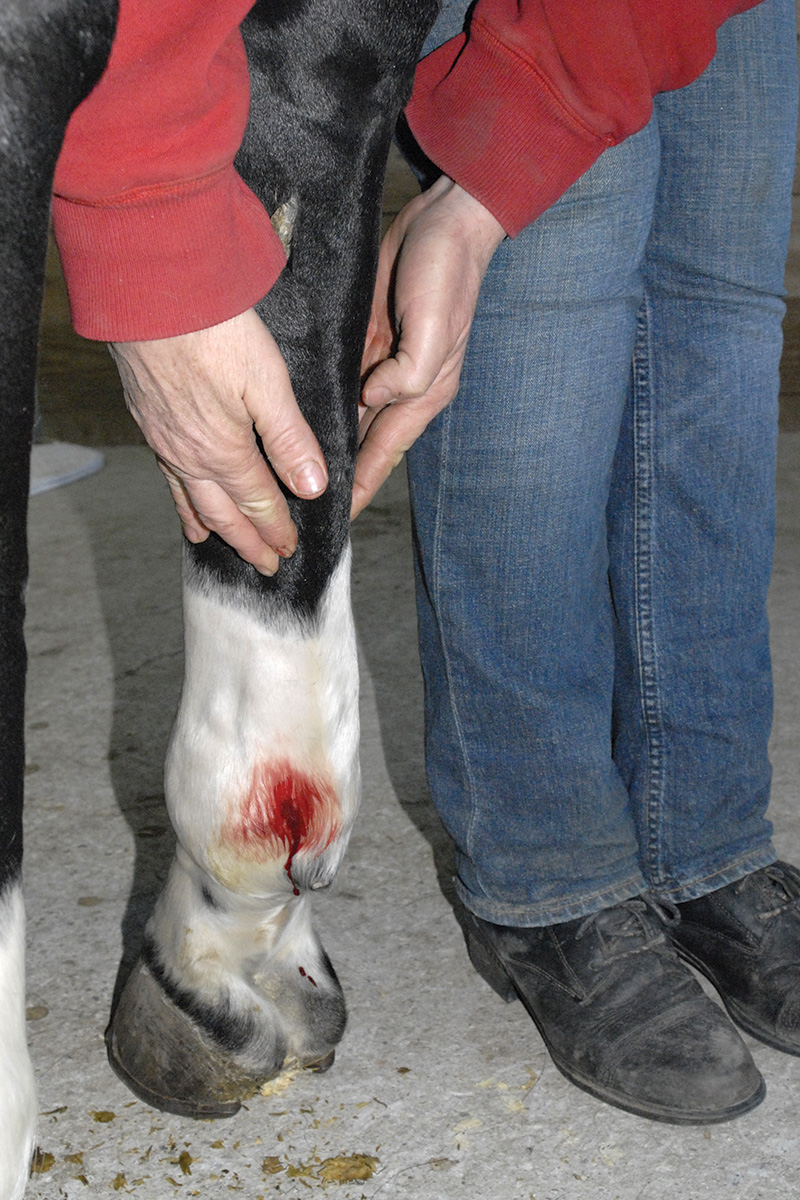
Treat a Puncture Wound as an Emergency
“An injury with an embedded object is an emergency and must be seen that day,” says Sam Crosby, DVM, whose equine veterinary practice is based in Arcadia, Okla.
Crosby has treated many horses injured in tornadoes with all manner of embedded objects, including wood, glass, small rocks, tree branches and fencing pipe. He says one of the most unusual foreign object puncture wounds he’s seen was sustained by a horse rolling on a deer antler in the pasture.
Use Technology First
Immediately take a close-up photo of the injury with your phone. Call your veterinarian and text the photo so they can quickly assess the injury.
“Get photos, call your veterinarian and have them assess it,” says Woodrow Friend, DVM, who has been a veterinarian with Rood and Riddle Equine Hospital in Lexington, Ky., for 20 years. “In some instances, they may say, ‘Go ahead and pull it out,’ but let them assess it. Telemedicine has changed how I do things. I get a lot of FaceTime videos, and it’s easier for me to triage these injuries.”
Of course, if you live in a very remote area and you can’t get a veterinarian out for days, this changes things.
“You could end up doing FaceTime with a veterinarian and they can give you advice on what to do,” recommends Friend.
Don’t Give Drugs Before.the Veterinarian
Do your best to restrain the horse and keep him still and calm to avoid further injury, but don’t administer any drugs while waiting for the veterinarian.
“Acepromazine is a common sedative that many people have on hand, but don’t give the horse any drugs,” says Crosby. “Ace causes blood vessels to dilate, and in stress situations, this decreases blood pressure and can cause the horse to go into hypovolemic shock.”
If the puncture wound is bleeding, you can use a folded towel to apply pressure around the injury—just not on top of the embedded piece.
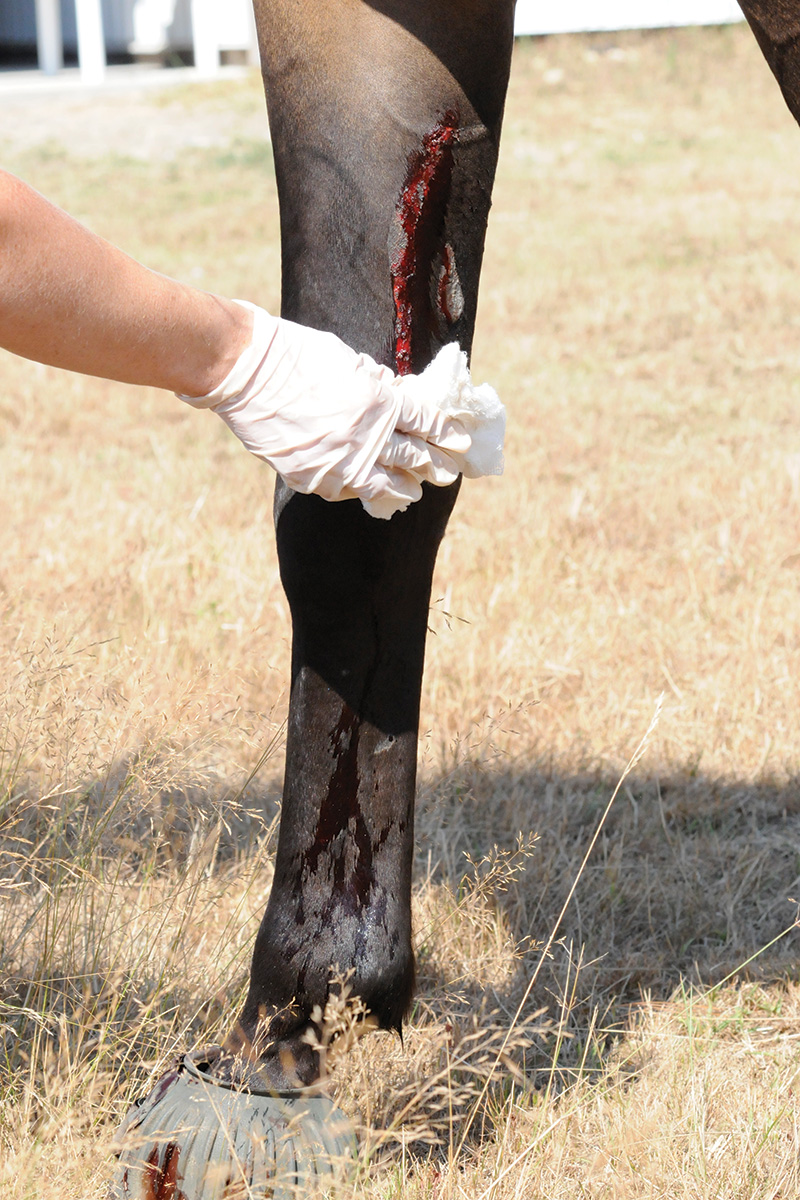
Friend points out that in some cases the embedded object may be stopping blood flow, and pulling it out could cause serious bleeding.
Why Wait?
There are two important reasons to wait for the veterinarian to remove an embedded object:
◆ To determine any damage of internal structures
◆ To make sure all of the object is safely removed
Depending on the injury, the veterinarian may use X-rays or ultrasound to observe internal structures around the embedded object and any resulting damage.
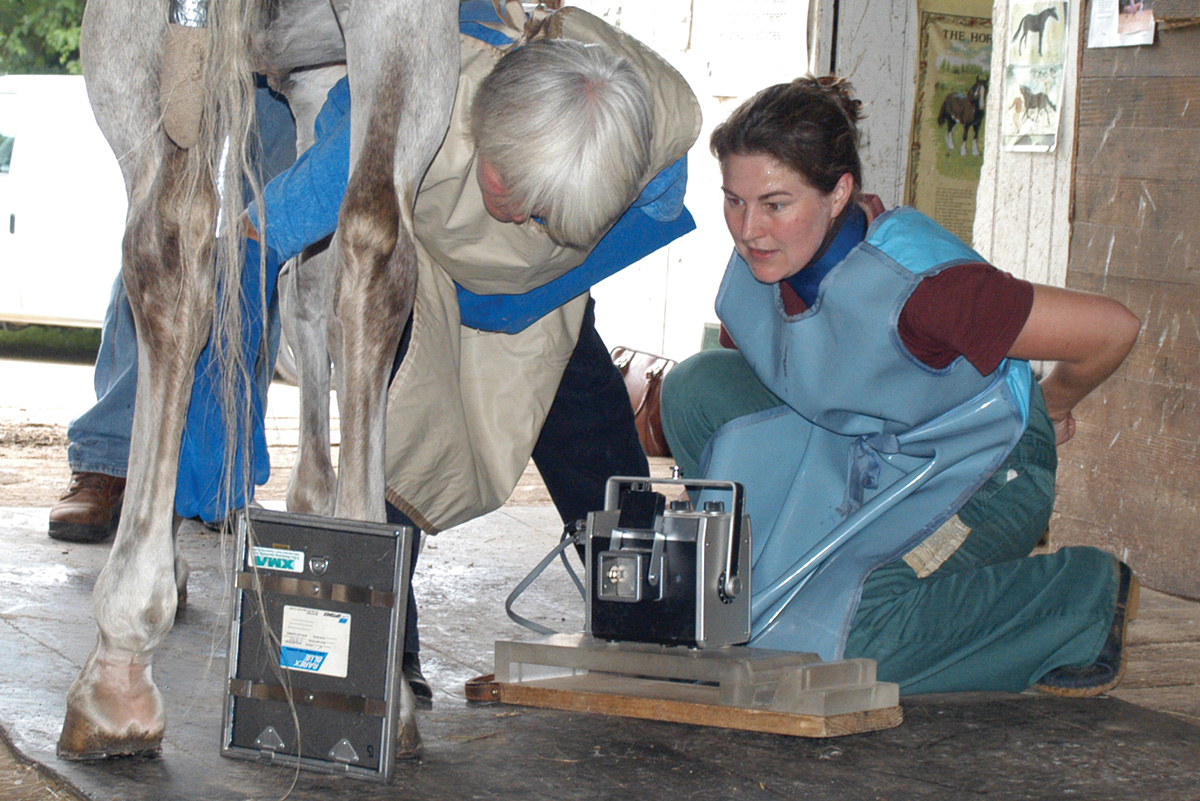
“Sometimes a wound can look small, but it depends on where it is,” says Friend. “If it’s near a joint capsule, you can get an infected joint.”
“If the wound is close to a joint, it’s especially important to take radiographs,” notes Crosby. “If you just pull the object out and it was near a joint, infection could set in and get a head. However, if the veterinarian knows it’s touching the joint, they can flush the joint, sew up any tear in the membrane, and treat as needed.”
Often an embedded object, such as a board or tree branch, breaks upon impact with the horse. Making sure all of it gets removed is crucial.
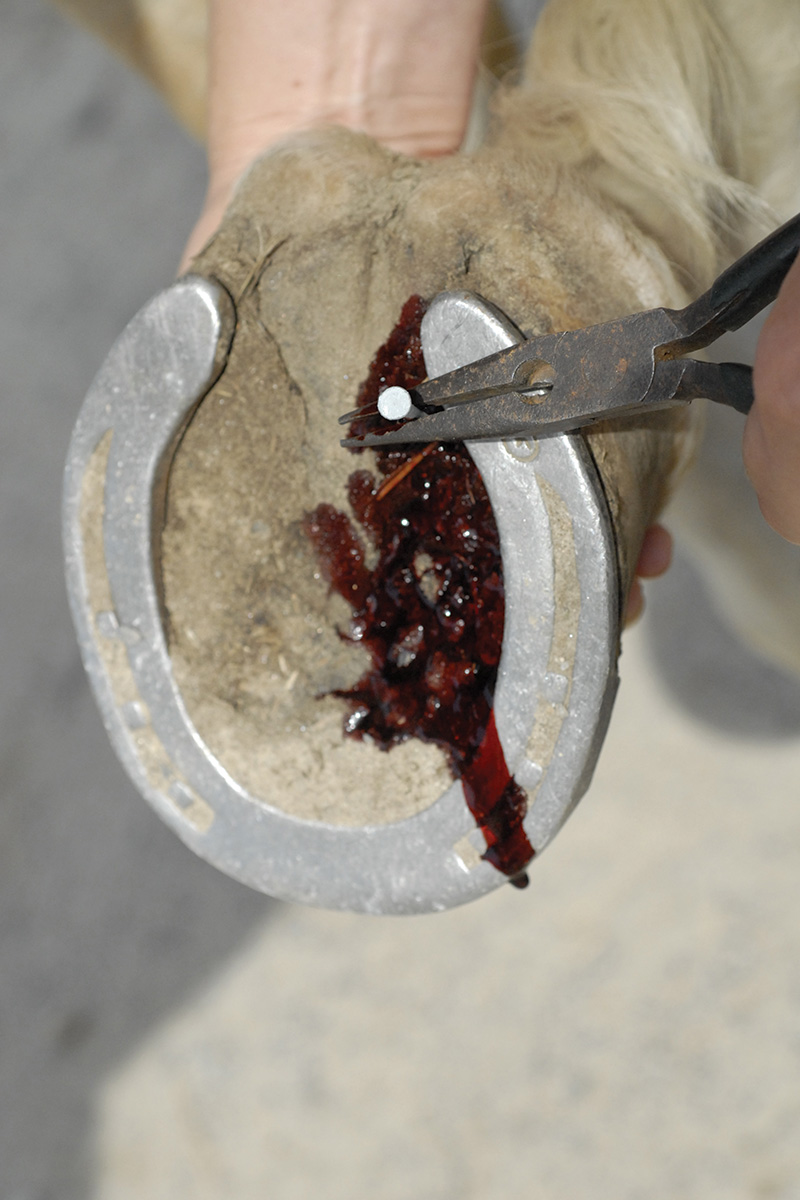
“Even if it’s just a piece of wood, I want to be able to assess if we got all of it out,” says Friend. “Sometimes you have the other end of the item, and you want to match the piece that came out. For example, with a broken fence board, you may think you got all of it out of the horse, but when comparing pieces, you can see there’s some missing.”
Friend relates the story of one horse who reared up in the barn and shattered a halogen light bulb with his head. When the wound kept draining and wouldn’t heal after 10 days, the owners called Friend. He found and removed a large piece of glass that was still embedded in the horse’s poll, which reinforces why it’s important for a veterinarian to initially assess puncture wounds.
Puncture Wounds in the Hoof
The most common hoof puncture wounds occur when a horse steps on a nail or fence staple.
“With the hoof, there are many internal structures,” says Friend. “You need to make sure you know where the object went.” He notes that any puncture wound of the hoof should be seen by a veterinarian, even if it seems small.
“If there’s a nail in a foot, I want to know where that nail goes,” adds Friend. “The frog will seal right up when you pull out a nail.”
“The problem with hoof wounds is that they close up quickly,” says Crosby. “If your horse steps on a nail or staple and you pull it out, then the veterinarian can’t see on X-rays how close it was to internal structures in the hoof.”
Treating Puncture Wounds
After your veterinarian has assessed the injury and taken any necessary X-rays or ultrasound images, they will remove the embedded object and begin treating the wound.
Depending on the injury, sutures may be needed. Medication to manage inflammation and pain will likely be part of the protocol.
Antibiotics may also be necessary to combat infection.
“In a tornado, pretty much anything that’s driven into a horse’s body is accompanied by debris and bacteria, and there is almost always infection involved,” says Crosby.
After initial treatment, your veterinarian will instruct you on how to continue treating the wound. Serious puncture wounds typically require a follow-up visit from the veterinarian.
With any wound—especially with punctures—it’s important for the horse to be up to date on his tetanus vaccine, so check your records. If it’s been longer than six months, your veterinarian will likely recommend a booster vaccination.
A Common Mistake
Beyond pulling out an embedded object before the veterinarian can assess it, improper wound cleaning is another common mistake.
“People get overzealous and try to do more than they should,” says Friend, who has seen horse owners flush wounds with alcohol, peroxide—even diesel fuel.
“You want to avoid anything that could be caustic to the tissues,” he explains. “The substance used to flush a wound can ‘pocket’ in the wound or be pushed into a space where it could cause more problems. [Additionally,] don’t ‘pressure wash’ the wound. Just rinse it off and keep it clean. Don’t try to do too much before the veterinarian gets there.”
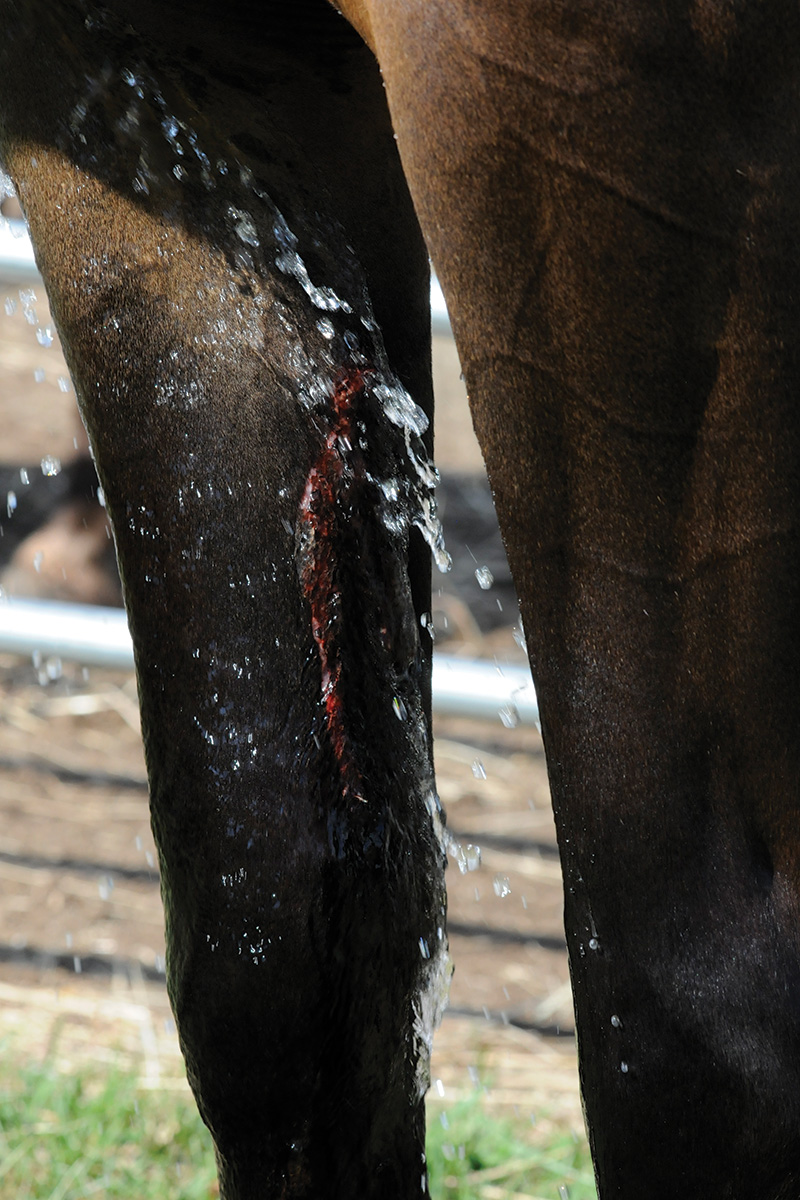
Cleaning Puncture Wounds
Skip the spray nozzle when cleaning wounds. Just use a hose and normal pressure to move dirt and debris out of the injured area. You should keep a surgical scrub or mild iodine soap on hand to help clean wounds. Lacking this, a mild dish soap, such as Ivory, will suffice.
Stay Vigilant
Any of the following indicate a wound is not healing properly. Call your veterinarian promptly if you notice:
◆ Oozing/draining from wound 10 days or longer post injury
◆ Persistent heat or swelling
◆ Horse has a fever
◆ Horse shows signs of lameness
This article about the treatment of puncture wounds in horses appeared in the August 2022 issue of Horse Illustrated magazine. Click here to subscribe!


